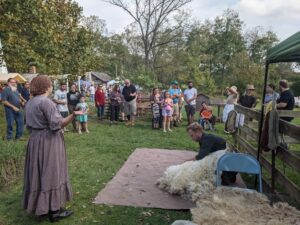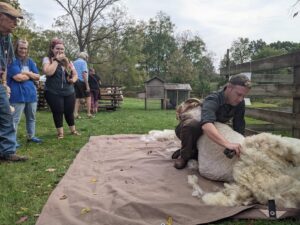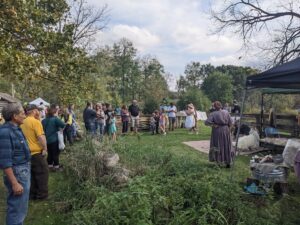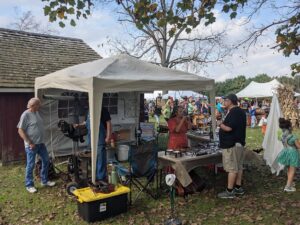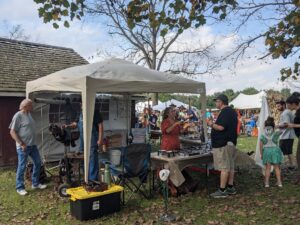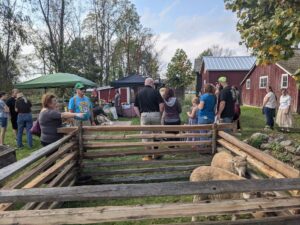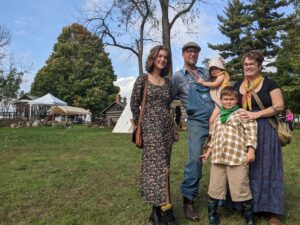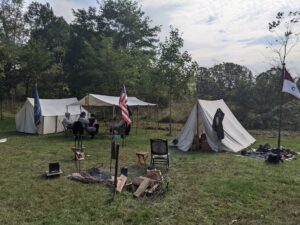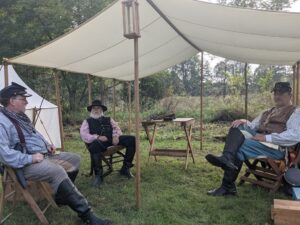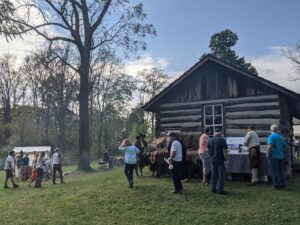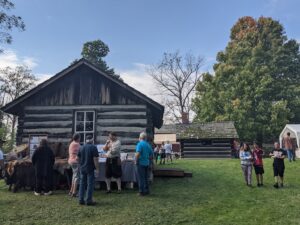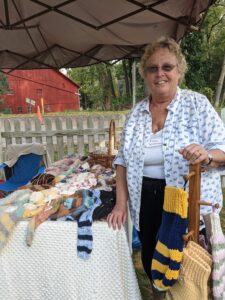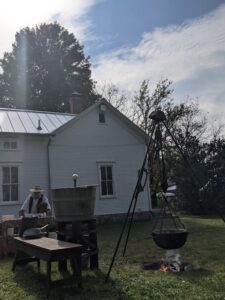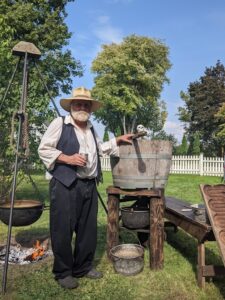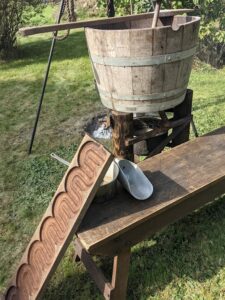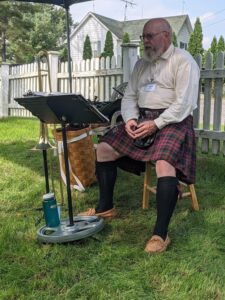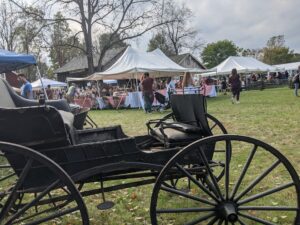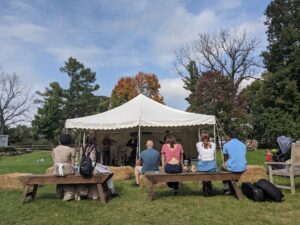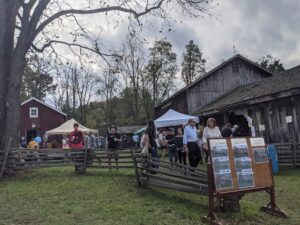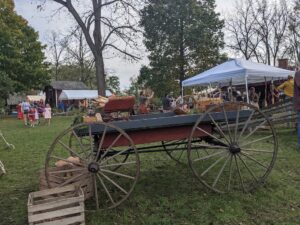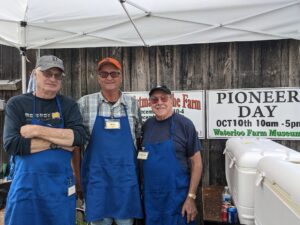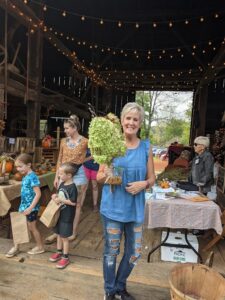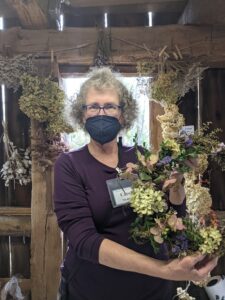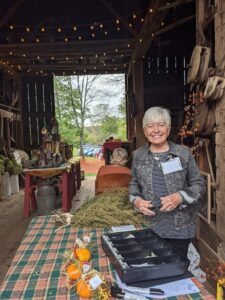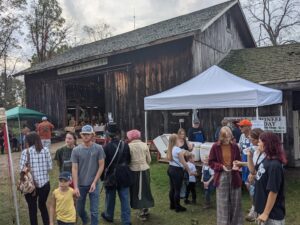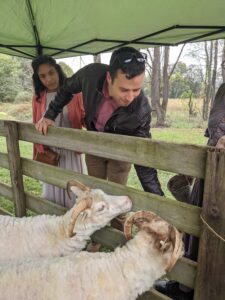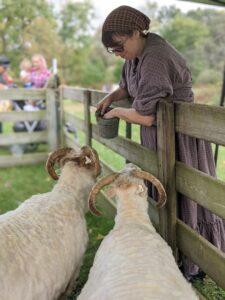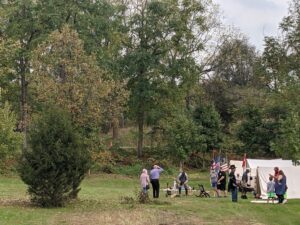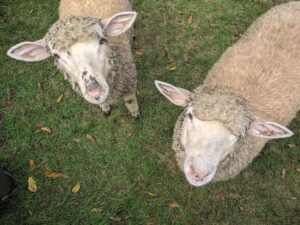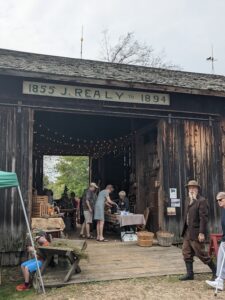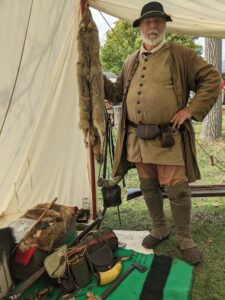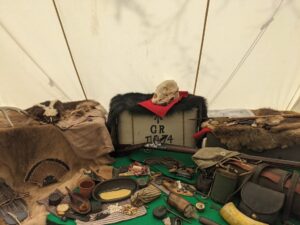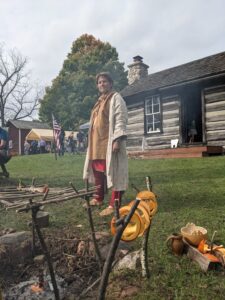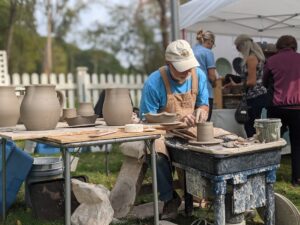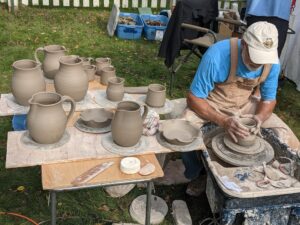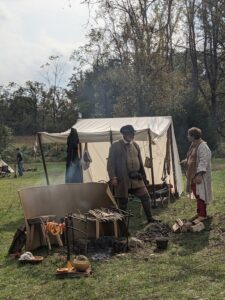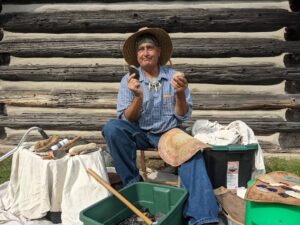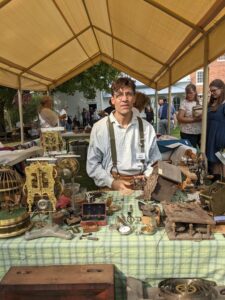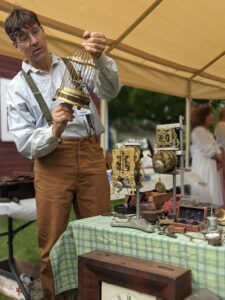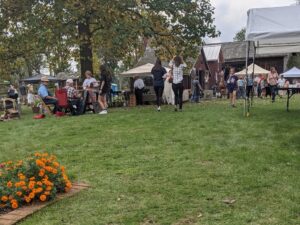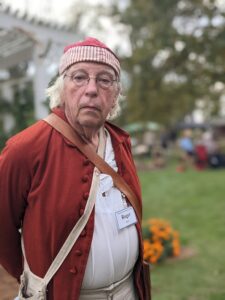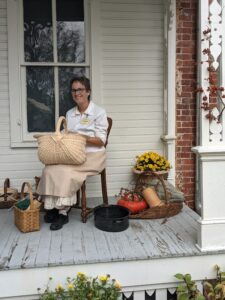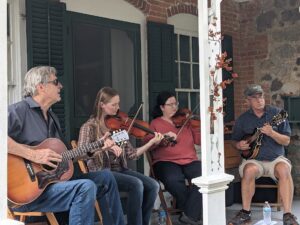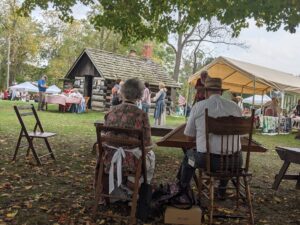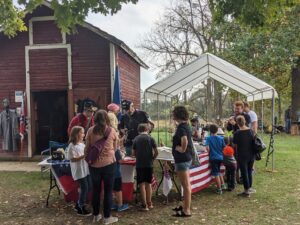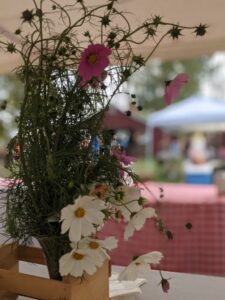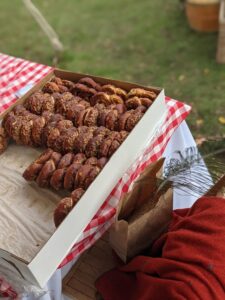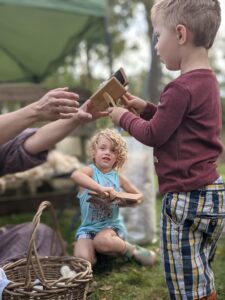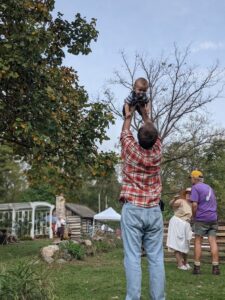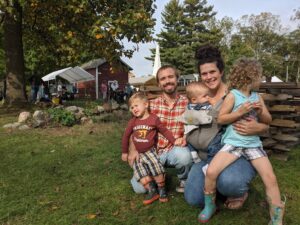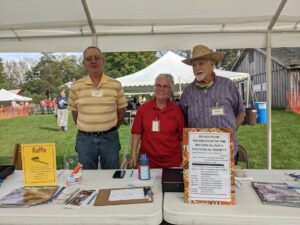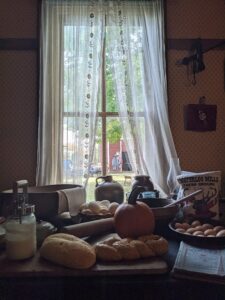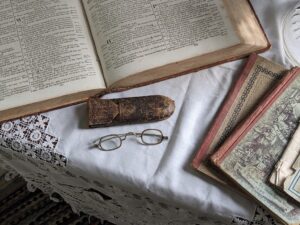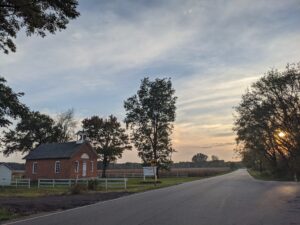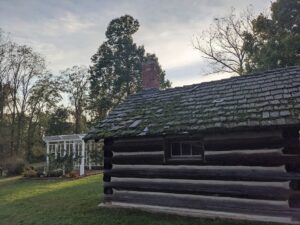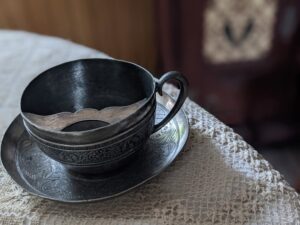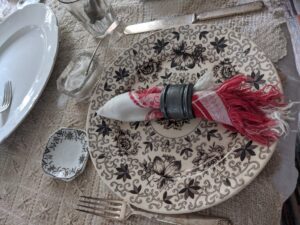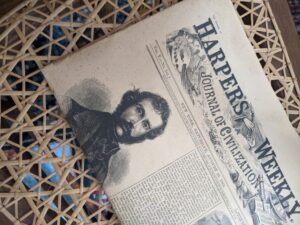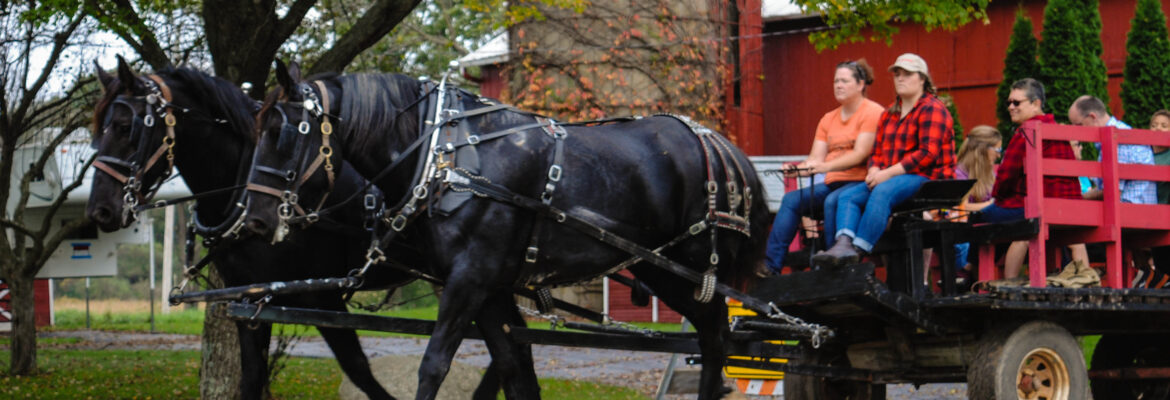Pioneer Day brings area’s history to life
by Jenny Smith
The grounds of the Waterloo Farm and Dewey School Museums swarmed with activity on the sunny morning of Oct. 10, as many turned out to learn more about the area’s pioneer days during a living history experience.
Pioneer Day, an annual celebration of late 19th-century farm life, has been a tradition for many local families since the 1960s, but each year it attracts more first-time visitors from across the state and beyond.
As the piper’s tune rang across the grounds, families streamed into the farmyard to see history unfolding before their eyes. Many interpreters and reenactors told of the exploits of Michiganders throughout history. Presentations ranged from Brian Dewey and Jim Hunt’s tales of explorer LaSalle and his companions who camped on the museum grounds, to Susan Dewey’s demonstration of Native American cooking. Union Civil War Reenactors pitched tents near the woods and educated the curious on a soldier’s life. The nearby log cabin housed a display of historical medicine and equipment, some recognizable today, and some, thankfully, no longer in use.
Demonstrators of several crafts and skills were scattered about the grounds. Adults gravitated towards the forges of blacksmiths such as Chris St. Charles, Anthony Davis, Byron and Jackie Gansley, and Lance Walker. The hands-on activities proved to be most attractive to the young. Children clustered around the flintknapping circles, chipping away stone with bits of copper and antler to form arrowheads under the watchful eye of two volunteer flintknappers.
The laundry area proved nearly as popular. Multiple children astonished their parents by scrubbing socks against the washboard with far more enthusiasm than they had ever shown for their own laundry. Other hands-on activities included trying woodworking tools with longtime volunteer Stephen Hopkins, shelling corn on an antique corn sheller, carding wool, making rope, and creating a dried flower tussy-mussy.
Fiber artists of many talents showed different ways to process fiber into textiles. LaFae Markle brought a number of wheels and spindles to the event and taught several patrons about the process of creating yarn from roving. Mary Minney showed off stick weaving and had several hand-woven rugs available for purchase. Great Escape Llamas also had two wheels swiftly turning out skeins and socks available for purchase. This author manned a display of natural dyes such as walnut and marigold as well as the tools for processing fleece. For those curious about the origins of wool, Faethe and Faelan the Icelandic sheep provided a demonstration under the skilled hands of a shearer.
Other demonstrations included quilting, clock making and repair, broom making, and cider pressing. Adults were able to taste-test the fresh fire-brewed beer, and all were welcome to a cup of crisp apple cider. For those who wished something a bit more filling, concessions offered pulled pork and hot dogs, pie, and more to hungry patrons. The market tent hosted a bake sale of donated goodies, including the pies entered in the annual pie contest. Pretzels that are to die for were also dished out under the market tent. The antique wagon held an array of freshly picked vegetables and herbs donated from local farmers and gardeners.
For those looking for a unique shopping experience, vendors were set up around the grounds selling traditional goods. Such offerings as jerky, honey, and maple syrup tempted the taste buds. Crochet baby items, hand-thrown pottery, llama wool products, rugs, and soap were available from others. The museum gift shop was stocked with T-shirts, magnets, and cooking utensils stamped with the logo of the farm. For the kids, there were aprons, books, bonnets, toys and collectable metal pencil sharpeners. The products of several artisans lined the shelves, from pottery mugs and crochet shawls to ornaments and hand-forged ironwork. The large Really barn housed the dried flower wreaths, swags, and centerpieces lovingly crafted by volunteers.
Animals played a big part on historical farms, and they were also a crowd pleaser at Pioneer Day. Two young goats let out curious bleats as customers visited the soap vendor, the milk of their species being a key ingredient. A coop full of chickens occupied the time of multitudes of children. In addition to the aforementioned fiber sheep, a pen of smaller sheep also drew many onlookers. Arguably the most popular animals were the powerful draft horses. The teams took throngs of visitors on a winding back road journey and gave a glance into the less hurried transportation of the past.
A tour of another sort took place in the farmhouse, where the public was treated to a guided look at the many rooms filled with historical furnishings and décor. The Dewey School was also open. For generations, many schoolchildren visited this school on field trips, and for many parents it is an exciting experience to be able to point out items they remember from their own childhood.
We at the Waterloo Farm and Dewey School museums would like to thank all who helped to put on this great event. As an entirely volunteer-run nonprofit, we depend on an amazing crew of volunteers to lend a helping hand every step of the way. Thank you to all who visited, made purchases, bought raffle tickets or made a donation. Please join us again for Christmas on the Farm on Dec. 4 and 5.
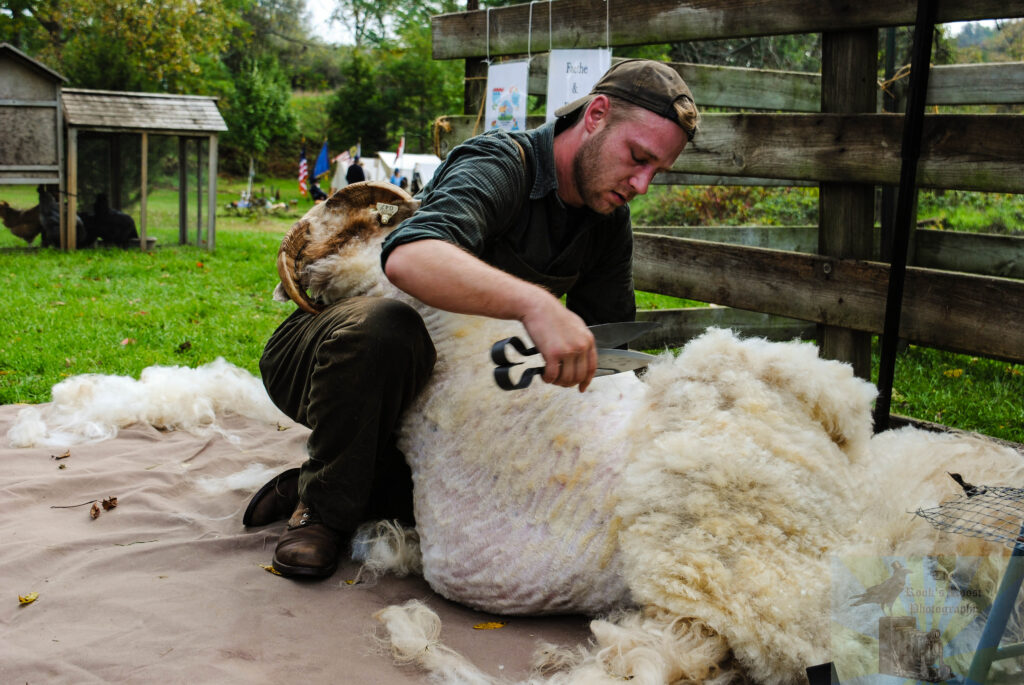
Faelan the Islandic sheep is sheared by hand during a demonstration.
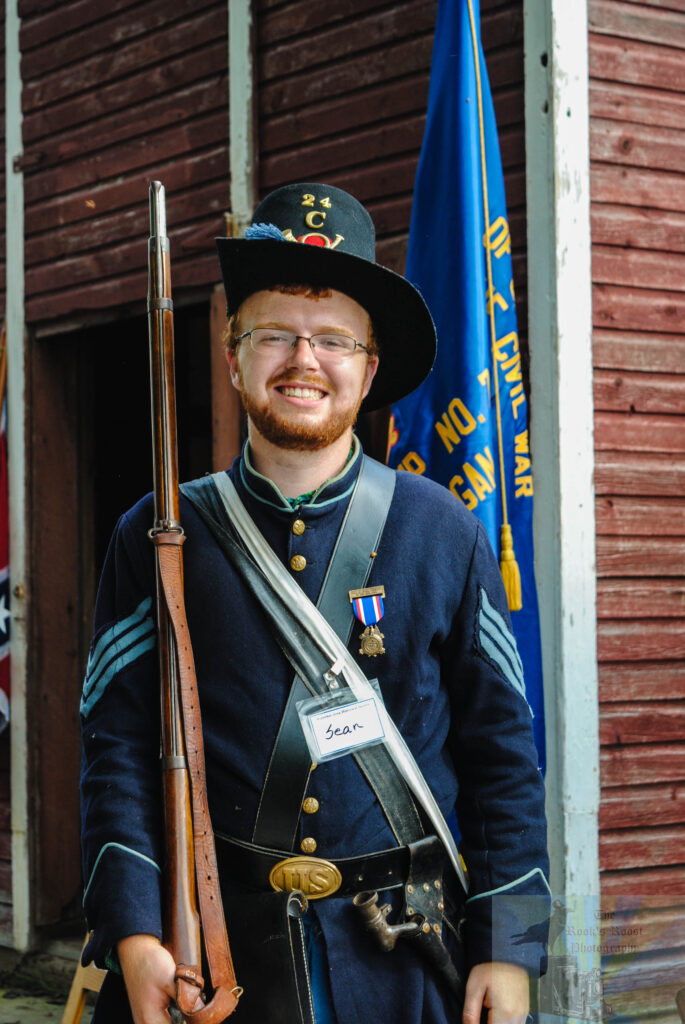
Sean, a Union Civil War reenactor, attended Pioneer Day.
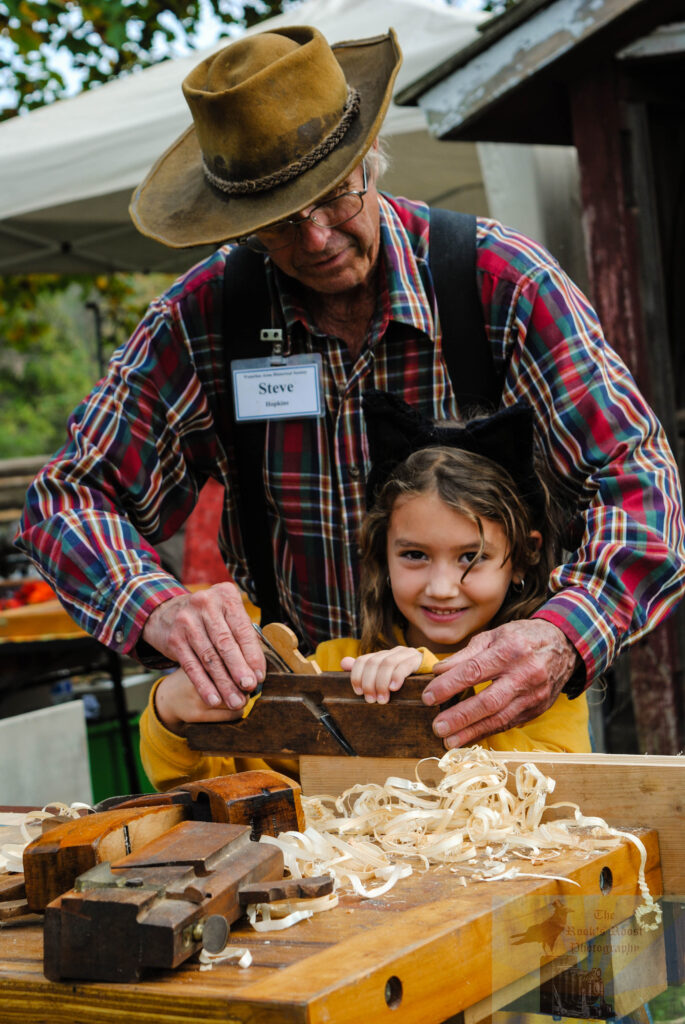
Steve Hopkins guides a guest in woodworking.
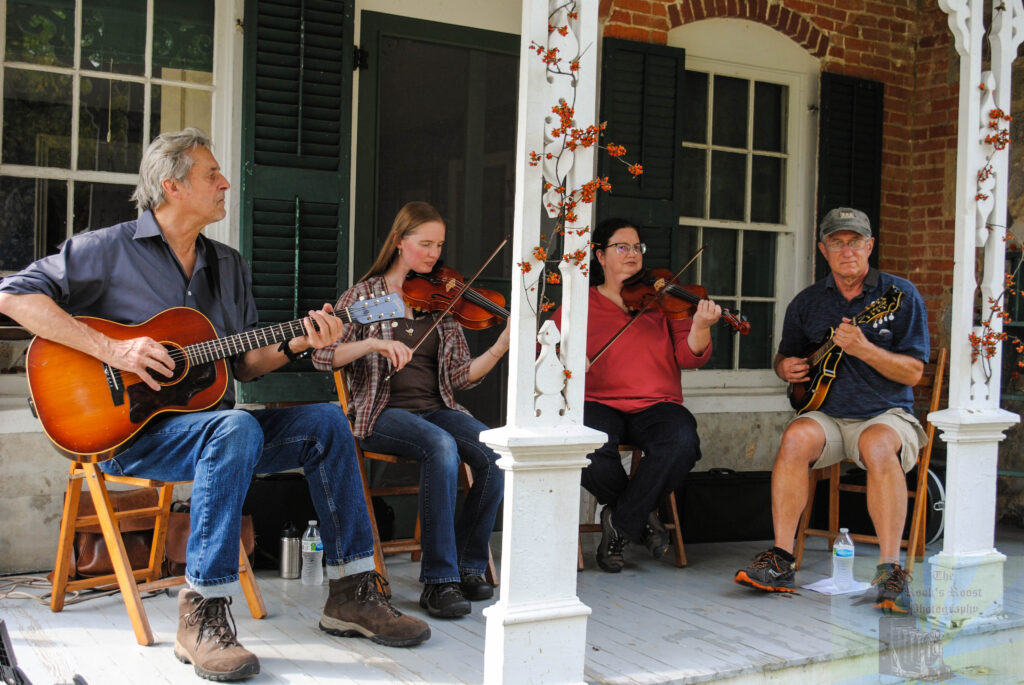
Askin’ for Trouble performs on the farmhouse porch.
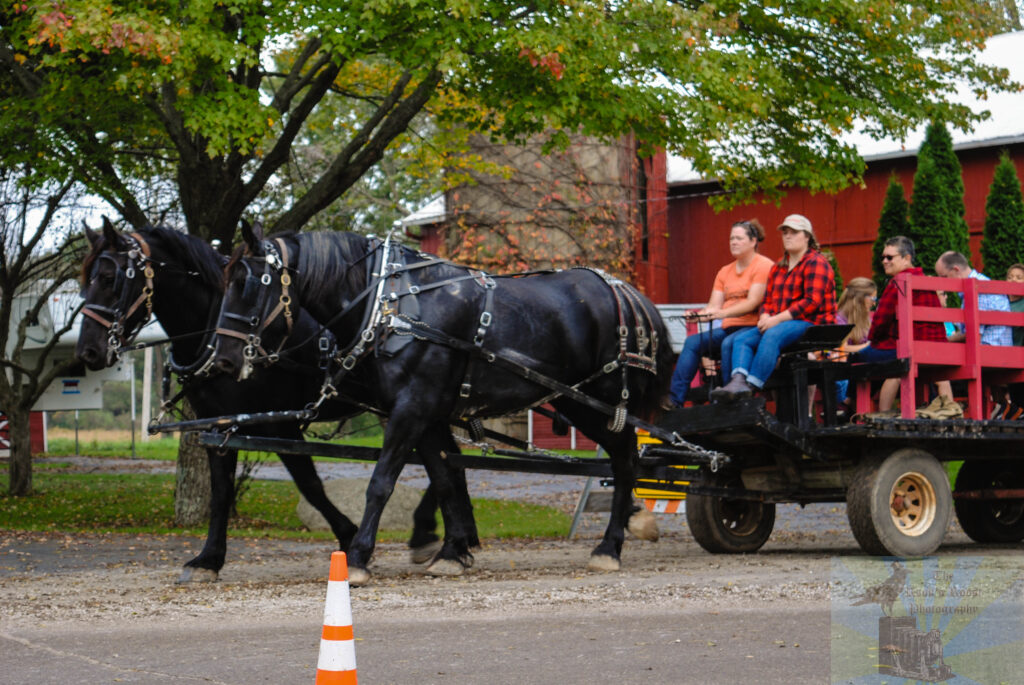
A team of horses takes guests on a back road journey.
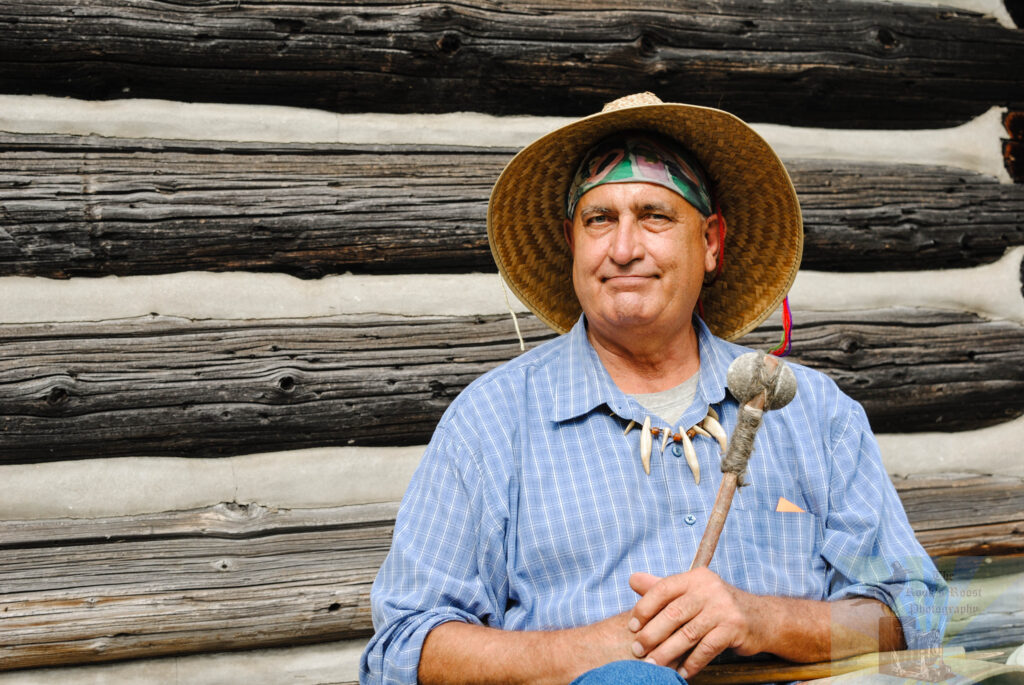
Flintknapper Dan Hovater demonstrated the making of stone tools.
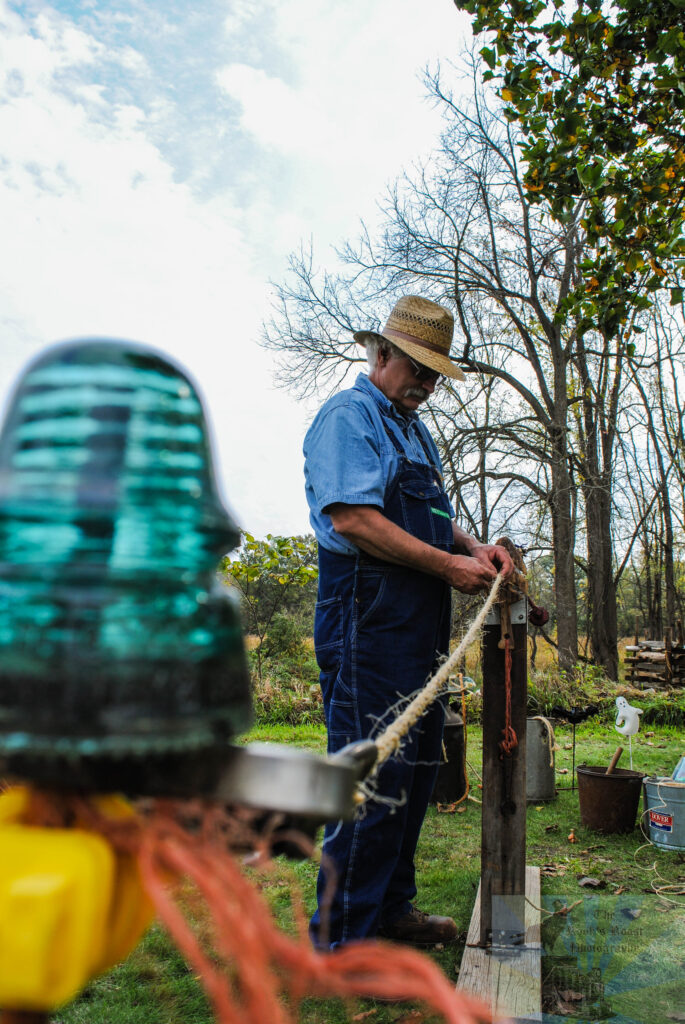
A volunteer makes rope the old-fashioned way.
Below are photos by DigitalCrumbs Photography.
